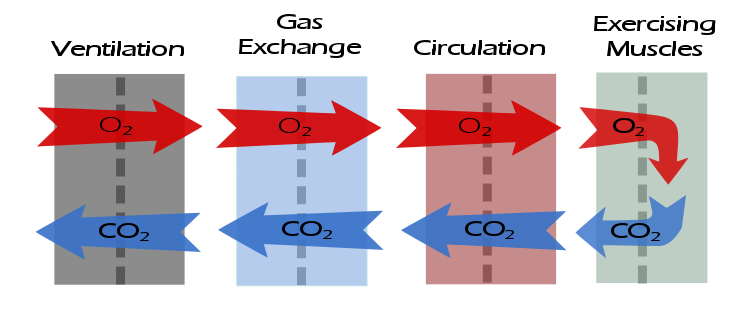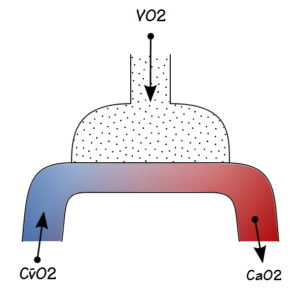I would like to re-emphasize the importance of the descriptive part of CPET interpretation. At the very least consider it to be a checklist that should always be reviewed even when you think you know what the final interpretation is going to be.

After gas exchange, the next step in the flow of gases is circulation. The descriptive elements for assessing circulation are:
What was the maximum heart rate?
The maximum predicted heart rate is calculated from 220 – age.
A maximum heart rate above 85% of predicted indicates that there has been an adequate exercise test effort.
Example: The maximum heart rate was XX% of predicted {which indicates an adequate test effort}.
What was the heart rate reserve?
The heart rate reserve is (predicted heart rate – maximum heart rate). A heart rate reserve that is greater than 20% of the (predicted heart rate – resting heart rate) is elevated and may be an indication of either chronotropic incompetence or an inadequate test effort.
Note: A negative heart rate reserve will occur whenever a patient exceeds their predicted heart rate.
Example: The heart rate reserve is XX BPM which is {within normal limits | elevated}.
Continue reading

